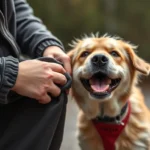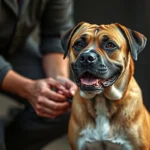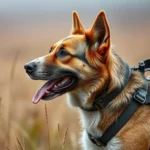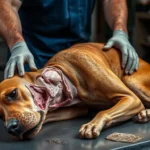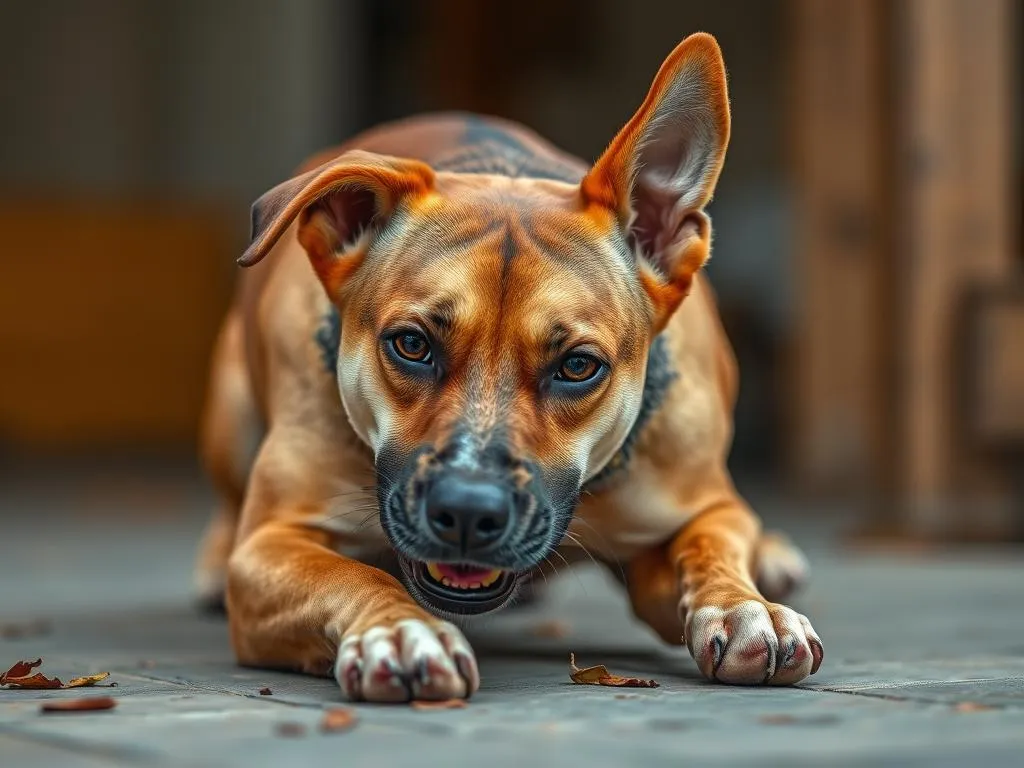
Introduction
Predatory aggression in dogs can be a troubling behavior for pet owners, often leading to dangerous situations if not addressed properly. This type of aggression is instinct-driven and can manifest as a strong desire to chase or capture prey-like objects, which might include small animals, moving vehicles, or even children. Understanding and managing predatory aggression is crucial for the safety of your dog, other animals, and the community at large.
In this article, we will explore how to stop dog predatory aggression by delving into its causes, recognizing its signs, assessing behavior, and implementing effective training techniques. We aim to provide you with a comprehensive guide to help you understand this complex behavior and take proactive steps toward modifying it.
Understanding Predatory Aggression
What is Predatory Aggression?
Predatory aggression is a natural instinct that is particularly prevalent in certain breeds, such as hunting dogs and terriers. It is characterized by a focused and intense desire to chase and capture prey. Unlike other forms of aggression, such as fear-based or territorial aggression, predatory aggression is not driven by fear or the need to protect territory. Instead, it stems from an innate hunting behavior that is present in many dogs.
Causes of Predatory Aggression
Several factors can contribute to predatory aggression in dogs:
- Instinctual behaviors: Certain breeds have been selectively bred for hunting and chasing, making them more prone to predatory aggression.
- Environmental triggers: Factors such as the sight, sound, or scent of small animals can provoke a predatory response.
- Lack of socialization and training: Dogs that have not been properly socialized or trained may not learn to control their predatory instincts.
Understanding the underlying causes of your dog’s behavior is essential for effectively managing and modifying it.
Recognizing the Signs
Recognizing the signs of predatory aggression is crucial for early intervention. Look for the following indicators:
- Body language: Signs include stiff posture, intense focus, and a low, wagging tail.
- Situational triggers: Pay attention to scenarios that provoke aggressive behavior, such as the presence of small animals, fast-moving objects, or certain environments.
- Examples: A dog may suddenly become fixated on a squirrel or start chasing a bike, displaying characteristics of predatory aggression.
By being vigilant and observant, you can better understand your dog’s triggers and take preventive measures.
Assessing Your Dog’s Behavior
Identifying the Severity of Aggression
To effectively address predatory aggression, it is important to identify its severity:
- Mild: The dog may show interest in chasing but does not act aggressively.
- Moderate: The dog may exhibit more intense focus and attempts to chase or capture.
- Severe: The dog actively engages in aggressive behavior toward the perceived prey.
Understanding the severity of your dog’s aggression can help determine the necessary steps for modification.
Conducting a Behavior Assessment
A thorough assessment of your dog’s behavior is vital. Here are steps to guide you:
- Observe: Spend time observing your dog’s reactions in various situations.
- Document: Keep a journal of behaviors, triggers, and intensity levels.
- Consult: Consider consulting with a professional dog trainer or behaviorist for an expert assessment.
By systematically evaluating your dog’s behavior, you can develop a clearer understanding of their predatory tendencies.
Techniques to Stop Predatory Aggression
Training Techniques
Training is a critical component in addressing predatory aggression. Here are some effective methods:
- Positive reinforcement: Reward your dog for desired behaviors, such as focusing on you instead of a trigger. Use treats, praise, or toys as motivation.
- Desensitization and counter-conditioning: Gradually expose your dog to triggers at a distance and reward calm behavior. Slowly decrease the distance as your dog becomes more comfortable.
- Consistency: Use consistent commands and cues to reinforce training. This helps your dog understand expectations and reduces confusion.
These training techniques can help redirect your dog’s focus and mitigate aggressive tendencies.
Professional Help
In some cases, seeking professional assistance is necessary. Here’s when and what to expect:
- When to seek help: If your dog’s predatory aggression is severe or you feel overwhelmed, consult a professional dog trainer or behaviorist.
- What to expect: Professional trainers will assess your dog’s behavior and design a tailored training program. Expect to learn about effective techniques and gain insights into your dog’s behavior.
- Group training classes: Participating in group classes can provide a controlled environment for socialization and training with other dogs.
Professional guidance can be invaluable in addressing complex behavioral issues.
Environmental Management
Modifying your dog’s environment can significantly reduce triggers of predatory aggression:
- Modify surroundings: Create a safe space where your dog can retreat when feeling overwhelmed by triggers.
- Use safety tools: Consider using leashes, muzzles, or harnesses during walks to prevent unwanted incidents.
- Manage exposure: Avoid exposing your dog to known triggers until training has progressed.
By taking control of your dog’s environment, you can help minimize instances of predatory aggression.
Creating a Training Plan
Setting Realistic Goals
Establishing realistic goals is essential for successful behavior modification:
- Short-term goals: Focus on small, achievable milestones, such as reducing the intensity of your dog’s reaction over time.
- Long-term goals: Aim for complete management of predatory behaviors, ensuring your dog can coexist safely in various environments.
- Patience and consistency: Understand that behavior modification is a gradual process that requires time and dedication.
Setting clear and realistic goals will help you stay motivated and focused throughout the training journey.
Daily Training Routines
Incorporating daily training routines can accelerate progress:
- Recommended exercises: Engage in basic obedience training, impulse control exercises, and focus drills.
- Incorporate play: Use playtime as an opportunity to reinforce positive behaviors and build a strong bond with your dog.
- Keep sessions short and engaging: Aim for 5-10 minute sessions to maintain your dog’s interest and prevent frustration.
A structured training routine will help reinforce learning and encourage positive behaviors.
Tracking Progress
Monitoring your dog’s progress is crucial for adjusting your training plan:
- Measure success and setbacks: Keep track of improvements and challenges, noting any changes in behavior.
- Adjust the training plan: Be flexible and willing to modify your approach based on your dog’s progress and needs.
Tracking progress allows you to celebrate successes and identify areas that require additional focus.
Building a Strong Bond with Your Dog
Importance of Trust and Relationship
Building a strong bond with your dog is essential for successful training:
- Strengthen your bond: Spend quality time together through play, training, and positive interactions.
- Engage in activities: Explore new environments, go for walks, or participate in dog sports to enhance your relationship.
A solid bond fosters trust and makes training more effective.
Socialization
Proper socialization is critical in managing predatory aggression:
- Gradual introduction: Slowly expose your dog to various environments, people, and other animals to reduce fear and anxiety.
- Controlled socialization: Arrange playdates with well-mannered dogs to practice positive interactions in a controlled setting.
Effective socialization can help your dog learn appropriate behaviors around various stimuli.
Conclusion
In conclusion, understanding and addressing predatory aggression in dogs is vital for the safety of your pet and those around them. By recognizing the signs, assessing behavior, and implementing training techniques, you can take proactive steps to modify this instinctive behavior. Remember to be patient and consistent in your approach, and don’t hesitate to seek professional help when needed.
With dedication and the right strategies, you can create a harmonious environment for your dog, fostering a strong bond and ensuring a safe and enjoyable experience for everyone involved.
